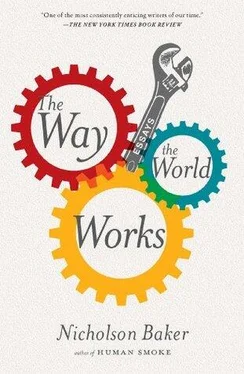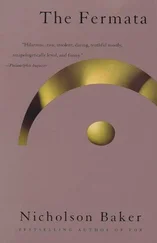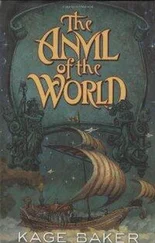Relations with City Hall are not good these days, either. When some kooks recently hijacked a ferryboat and occupied Saint Mark’s with the help of a cardboard tank, a famous Italian television commentator announced that he would be spending the next day in the square. The gondoliers, through their official representatives, lodged a protest with the city, saying that the TV equipment would interfere with their business and they wanted due compensation. Bruno thinks that was a mistake. “Our image is more important than immediate money, you see. The image pays in the long term.” Formerly gondoliers rowed political dignitaries and racing champions during annual celebrations like the Regata Storica or the Sensa (the day in which the mayor of Venice celebrates the city’s marriage to the sea by tossing a ring into the water out by the Lido, while a man with a microphone adds booming color commentary); now the four-oared boats of honor are manned by volunteer members of the city’s rowing clubs. “It is true that the city spares money by giving these services to the rowing clubs,” Bruno says. “But I was one of those on the table who said, ‘No, no, no, we must do that. Who if not the gondoliers? We should do that for free. One day a year, we should pay our people, in order to take a place there.”
Much of the ill-feeling between the city and the gondoliers is a result of the rampancy of moto ondoso. Speed limits are posted on the Giudecca and the Grand Canal—11 kilometers per hour for vaporetti-buses, 7 for water trucks, and 5 for water taxis — but they are seldom enforced. The gondoliers want “strict repression,” by which they mean traffic cops who will stop motormen — especially water-taxi drivers — from speeding and behaving recklessly. But the motormen evidently have powerful friends. At a big moto ondoso conference in June that I went to, under the eighteenth-century painted ceiling of the Venice Atheneum, a group of tough-looking water-taxi drivers with gold jewelry stood along the wall, arms crossed, and jeered audibly throughout a slide presentation of decaying stonework and leaping dual-engine boats. “They are brutes,” says Bruno. “They are savages. They should be thrown out the window.”
In principle, gondoliers have nothing against engines. Bruno’s gondola cooperative (the Ducale) owns ten big excursion launches, each carrying from thirty to fifty passengers; it also maintains the only reduced-wave water taxi in the city, the Eco, which has a lower-horsepower engine and a hull that does a better job of healing its transient water wound. In 1988, Bruno put his gondola in dry dock and drove a water taxi for a year. He returned to the oar, though, because, he said, “I wasn’t sweating enough.” Sweating rowers created the Venetian Republic, one recalls; the gondola is a direct link back to the glory days, when fifty-oared, ocean-roaming triremes earned or stole for the city its Renaissance fortune. The gondola’s prow, not the Evinrude’s screw, is Venice’s omnipresent postcard symbol for good reason, and it would be sad if unregulated motor traffic succeeded in sweeping the chaotic waters in front of St. Mark’s as free of black boats as the Giudecca Canal is now.
Bruno’s idea these days is for the creation of an elite corps of rowing police. Each would patrol a section of the city, standing up, using a smaller type of boat called a s’ciopon . Such floating mounties used to exist; because their boats were smaller and nimbler than the existing police motorboats, they could keep an eye on the narrow canals, too, which are now sometimes completely blocked by scofflaws. Oar-cops would be able to feel for themselves the destabilizing effect of waves in a way that existing Polizia and Caribinieri can’t; they would know better what gondoliers contend with every day. “But if I talk like that with someone, they think I come from Mars,” Bruno told me.
Shouldn’t it be possible to institute an ora-remi —an oar hour, or two, in the middle of the afternoon (when business slows down anyway) during which only human-powered vehicles would be allowed on all the canals of Venice? Several big four- or six-oared barges, like the baroque burchielli that once plied the river Brenta to and from Padua, could then peaceably proceed, stuffed with happy map-flapping tourists, from San Marco up the Grand Canal, in place of the ubiquitously groaning No. 1 vaporetto. Imagine daylit water that had calmed down enough to reflect, as it once did, the Redentore or the porphyritic palazzi disappearing around the curve of the Grand Canal. Imagine the water-taxi men chewing at their toothpicks from the sidelines. Imagine the history-sheltering silence. Gondolas would pour from their moorings to celebrate, wedding bells would swing in their leaning towers, women would kiss their husbands or their gondoliers, and everyone would weep and spend lots of money.
(1998)
Wikipedia is just an incredible thing. It’s fact-encirclingly huge, and it’s idiosyncratic, careful, messy, funny, shocking, and full of simmering controversies — and it’s free, and it’s fast. In a few seconds you can look up, for instance, “Diogenes of Sinope,” or “turnip,” or “Crazy Eddie,” or “Bagoas,” or “quadratic formula,” or “Bristol Beaufighter,” or “squeegee,” or “Sanford B. Dole,” and you’ll have knowledge you didn’t have before. It’s like some vast aerial city with people walking briskly to and fro on catwalks, carrying picnic baskets full of nutritious snacks.
More people use Wikipedia than Amazon or eBay — in fact, it’s up there in the top-ten Alexa rankings with those moneyed funhouses MySpace, Facebook, and YouTube. Why? Because it has 2.2 million articles, and because it’s very often the first hit in a Google search, and because it just feels good to find something there — even, or especially, when the article you find is maybe a little clumsily written. Any inelegance, or typo, or relic of vandalism reminds you that this gigantic encyclopedia isn’t a commercial product. There are no banners for E  Trade or Classmates.com, no side sprinklings of AdSense.
Trade or Classmates.com, no side sprinklings of AdSense.
It was constructed, in less than eight years, by strangers who disagreed about all kinds of things but who were drawn to a shared, not-for-profit purpose. They were drawn because for a work of reference Wikipedia seemed unusually humble. It asked for help, and when it did, it used a particularly affecting word: “stub.” At the bottom of a short article about something, it would say, “This article about X is a stub. You can help Wikipedia by expanding it.” And you’d think, That poor sad stub: I will help. Not right now, because I’m writing a book, but someday, yes, I will try to help.
And when people did help they were given a flattering name. They weren’t called “Wikipedia’s little helpers,” they were called “editors.” It was like a giant community leaf-raking project in which everyone was called a groundskeeper. Some brought very fancy professional metal rakes, or even back-mounted leaf-blowing systems, and some were just kids thrashing away with the sides of their feet or stuffing handfuls in the pockets of their sweatshirts, but all the leaves they brought to the pile were appreciated. And the pile grew and everyone jumped up and down in it having a wonderful time. And it grew some more, and it became the biggest leaf pile anyone had ever seen anywhere, a world wonder. And then self-promoted leaf-pile guards appeared, doubters and deprecators who would look askance at your proffered handful and shake their heads, saying that your leaves were too crumpled or too slimy or too common, throwing them to the side. And that was too bad. The people who guarded the leaf pile this way were called “deletionists.”
Читать дальше

 Trade or Classmates.com, no side sprinklings of AdSense.
Trade or Classmates.com, no side sprinklings of AdSense.










